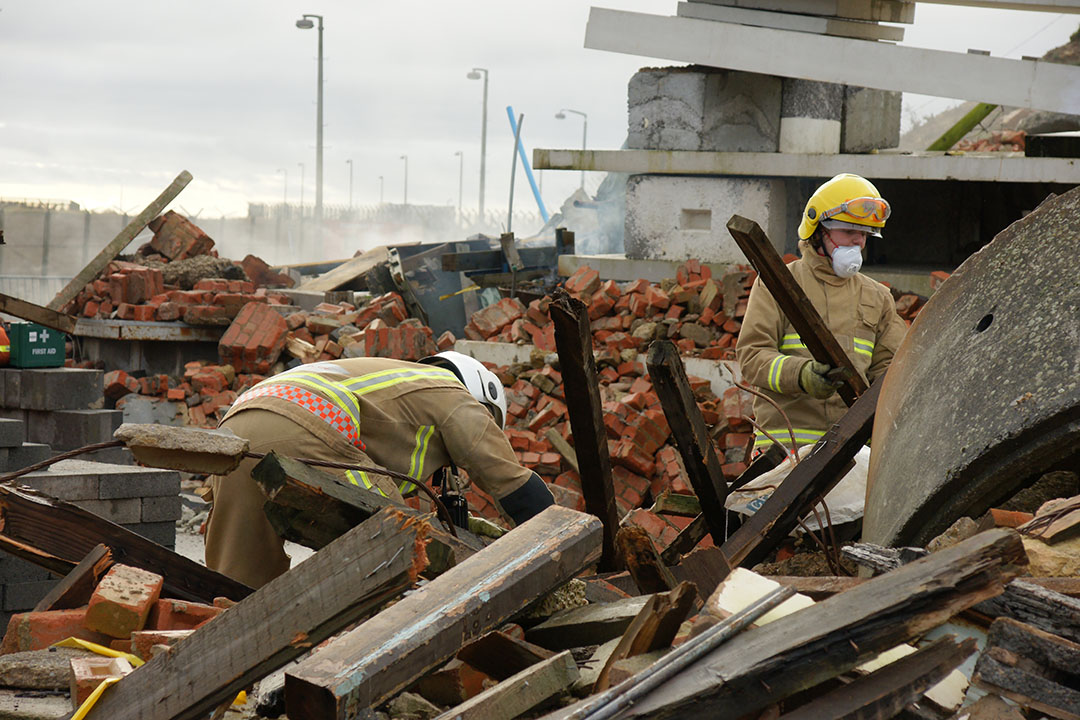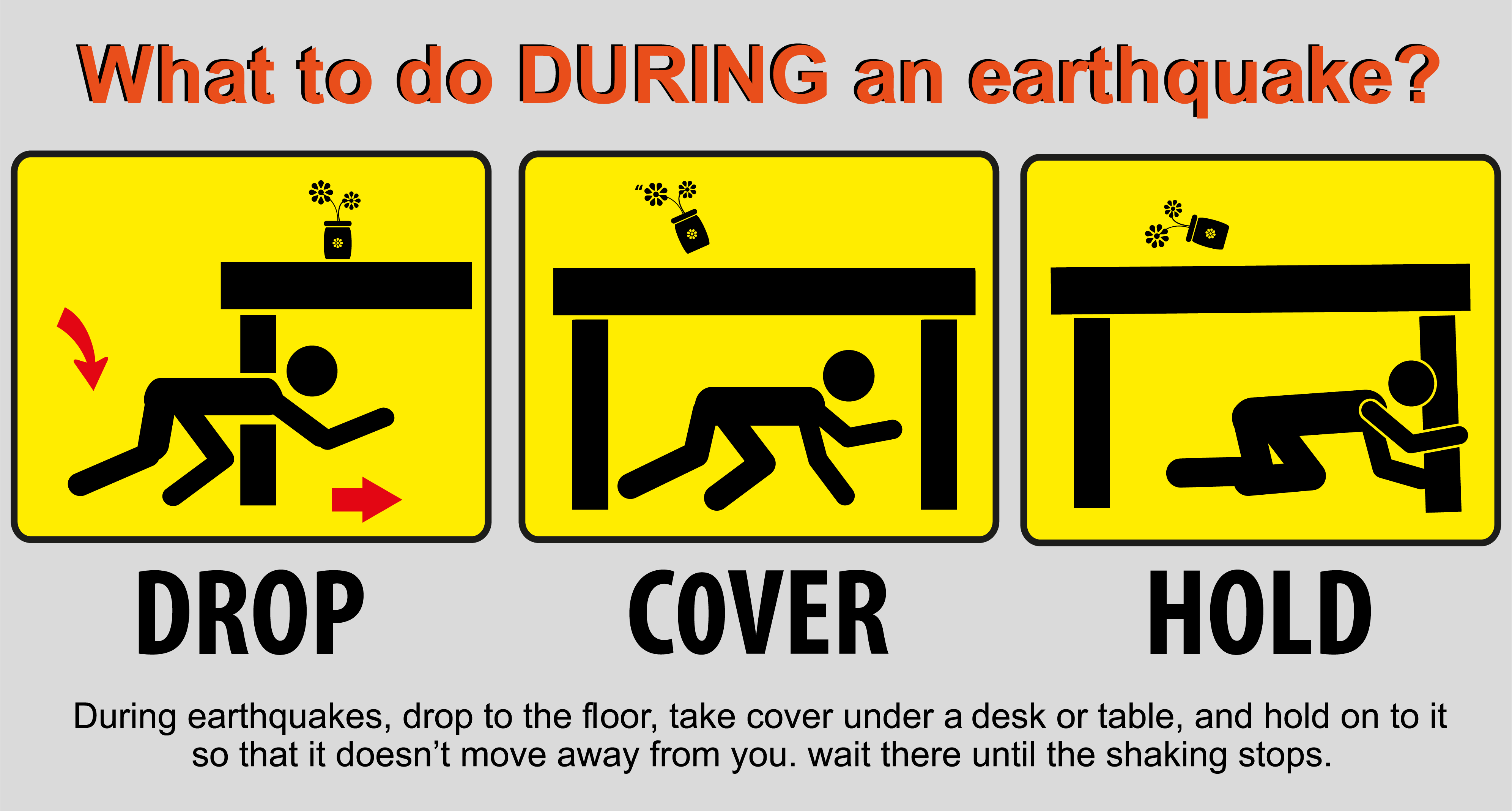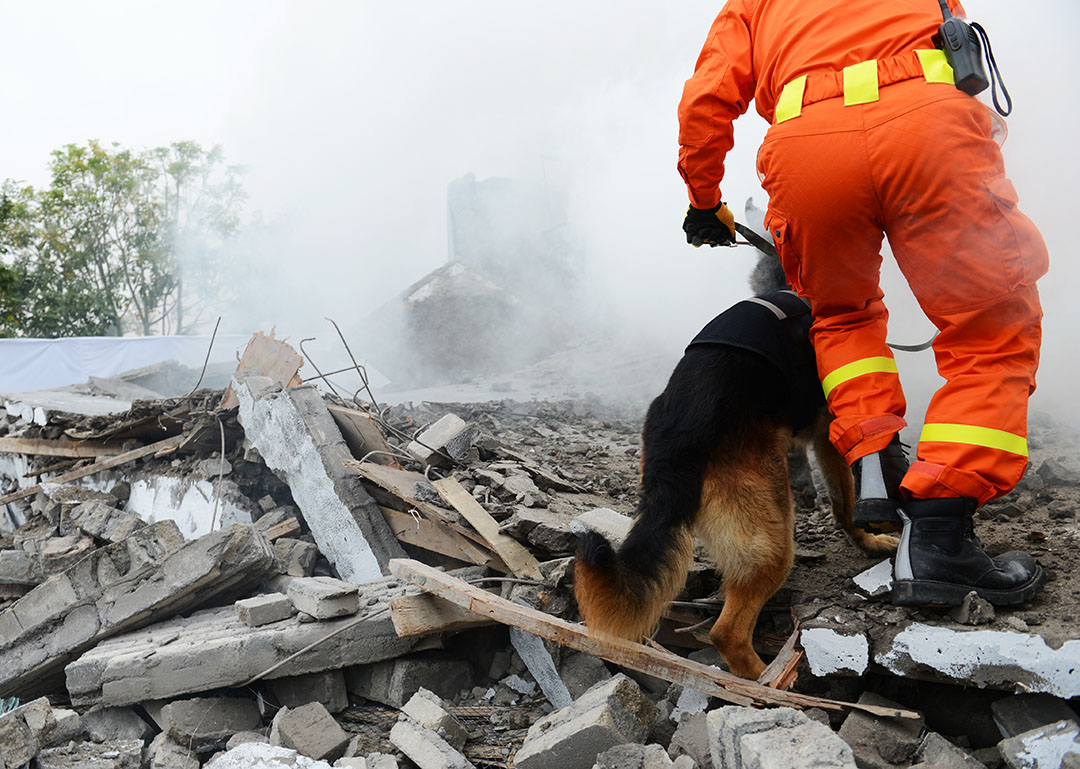Staying Level: Earthquake Preparedness and Safety
Earthquakes are sudden, rapid shaking in the Earth’s crust caused by tectonic plate movement and other seismic activity. Earthquakes can cause property damage, injuries and even death. The Federal Emergency Management Agency (FEMA) estimates that a large earthquake in a major U.S. metro area could cause as much as $200 billion in damage.
An earthquake can be followed by aftershocks, tsunamis, landslides and other damaging seismic events. Because earthquakes can occur without warning, it’s important for employers and their workers to know proper earthquake safety protocol for their area.
Prepare Your Property
You should keep your property secured so it is less likely to break or hurt someone if a quake occurs. Make sure any heavy equipment or other heavy objects sit as low to the ground as possible so they can’t fall.
Televisions, desktop computers, microwaves, laundry machines and other heavy electronics and appliances can be secured to walls with flexible nylon straps. Secure wall-mounted objects and tall furniture to wall studs or masonry built into the wall. Make sure heavy objects aren’t hanging over or next to beds, chairs or anywhere else people sit.
Plans and Emergency Supplies

Because earthquakes can disrupt entire cities or regions without warning and can vary in strength, it is important to have plans in place for what you will do to keep yourself safe during and after a quake.
You should keep important contact information on both a cell phone and on paper in case your cell phone dies. It’s also a good practice to have earthquake safety drills in your home and your workplace so everyone knows what to do during a quake and where to meet up after the shaking stops.
Since earthquakes can damage or destroy homes and workplaces, you should keep at least one emergency kit available, or several kits in different places, such as at home, at work or in your vehicle. The specific supplies you need can vary, but may include:
- Identification, records, insurance paperwork and other information
- Cash and credit cards
- At least three days of unexpired food, water and necessary medications
- Toiletries (soap, toilet paper, hygiene products)
- A flashlight
- A whistle, in case you need to alert rescuers to your location
- Extra sets of clean clothing, undergarments and shoes
- Dry blankets and sleeping bags
- Tools and automotive supplies (gas can, spare tire and jack, oil, etc.)
- A fully charged fire extinguisher to fight small fires or escape large fires
- Any supplies needed for pets, children or people with special needs
During an Earthquake

The specific steps to take during an earthquake will depend on where you are when it starts, but a good general rule to remember is “drop, cover and hold on.” First, get on your hands and knees, then look for a sturdy desk or table to crawl under. Use one arm to cover your head and neck while holding on to your shelter with your other arm. If you don’t have a desk or table to hide under, use both arms to protect your head and neck. If you’re in bed when an earthquake begins, stay in bed, curl up and use a pillow to protect your head.
Contrary to popular belief, you should not try to brace yourself in a doorway, since those aren’t any more stable than the rest of the structure and could collapse on top of you. Stay away from windows and doors with large glass panes.
Do not go outside during the quake, since falling objects and debris can injure or kill you. Stay wherever you are until the quake stops and you know it’s safe for you to leave. If you get trapped under a pile of rubble or in a damaged building, only scream for help as a last resort to avoid inhaling hazardous dust. If possible, use a cell phone to call or text, blow a whistle or tap on a pipe or wall to notify rescuers and emergency responders that you’re trapped.
After the Earthquake
Once you know the shaking has stopped, check yourself for injury before doing anything else. If you’re not seriously injured, check others for injury and provide first aid if you can. First responders and communications networks may be overwhelmed immediately following the quake, so you should only call 911 for life-threatening injuries or emergencies.
Grab emergency supplies and leave the building, bringing others with you if possible, and move to an open space away from falling debris. Once you and your group are safe, assist with rescue operations and first aid if you can.
If your home has been damaged, you should stay in a safe shelter until repairs can be made. Listen to radio or follow other media for shelter locations in your area and other instructions. If you still have cell service, text the word “SHELTER” followed by your zip code to 43362 (4FEMA) to get information about the public shelter closest to your area.
Damage Cleanup and Repair
Even after the shaking has stopped, you’ll want to use caution when repairing and cleaning earthquake damage. If you’re at home and not in immediate danger, check your electrical, water, sewer and gas lines. Shut off damaged lines if you can and contact the utility company. If you smell a gas leak, call 911 immediately.
Use a battery-powered flashlight to check for damage because candles and other open flames can ignite gas leaks. Check that water and sewage lines are still working before you use the restroom and clean up spilled medications and chemicals to keep them from leaking into the ground or water sources. Be careful when opening drawers and cabinets, since contents may have shifted during the quake. If you cannot repair damage yourself, contact qualified repair personnel.
Conclusion
Earthquakes, aftershocks and other seismic activity can cause significant damage with almost no warning. However, if you and your employees know what to do before a quake happens, you can help protect yourselves and your company’s operations.
Ready.gov has plenty of materials designed to help individuals, companies and communities prepare for and recover from earthquakes and other natural disasters. SafetySkills also offers an Earthquake Safety preparedness course to help employees know what to do before, during and after a quake.


